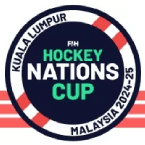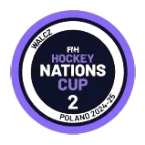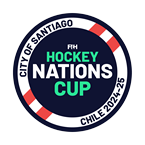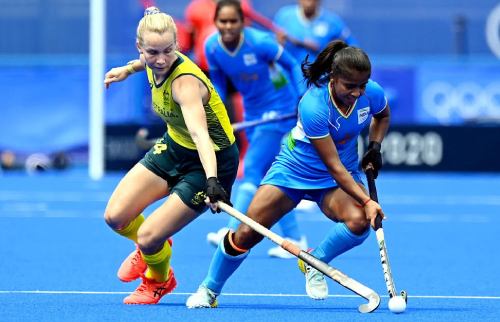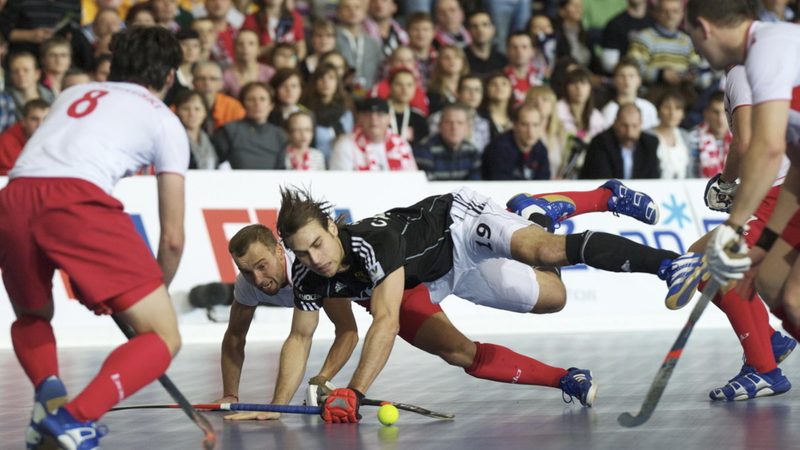
The FIH has today published the Rules of Indoor Hockey 2013, which came into effect on 1 September 2013. As previously reported, the most significant change to the rulebook is the reduction of the maximum number of players allowed on the pitch from six to five per team (Rule 2.1).
The decision to decrease the number of players is a bold step forward by the FIH, and is in line with the FIH’s strategic vision of enhancing and evolving rules and formats to maintain hockey’s position as one of the most progressive sports on the Olympic Programme. More information about this rule change can be found by clicking here.
Aside from the reduction in the number of players, it is also important to note that, unlike the traditional 11-a-side format, there will be no own goal in Indoor Hockey. The majority of the other changes to the indoor game are either alignments with the Rules of Outdoor Hockey, simplifications, clarifications or reinforcements of existing Indoor Rules, including the following:
- Rules 2.3f & g: Adjustments to the substitution rules, whereby time will not be stopped for any goalkeeper substitution
- Rule 5.2: Removal of the requirement that a time out cannot be called in the last two minutes of each half
- Rule 6.5a: Adjustment to where a bully may be taken, such that ‘A bully is taken close to the location of the ball when play was stopped but not within 9 metres of the back-line and not within 3 metres of the circle’
- Rule 9.12: The Rule remains as ‘Field players must not play the ball while lying on the pitch or with a knee, arm or hand on the pitch other than the hand holding the stick’
The following further Rules changes, amendments, additional guidance and/or Umpire Briefing updates are included:
- Umpires should recognise and interrupt play, with a bully re-start, when the ball is either trapped between players’ sticks or it becomes unintentionally trapped against the side-boards
- Deliberately trapping the ball against side-boards should be viewed as an offence, and penalised accordingly
- ‘Drilling’ (the act of playing the ball deliberately and hard into an opponent’s stick, feet or hands with associated risk of injury when a player is in a ‘set’ position) and ‘spinning’ (whereby a players collects, turns and tries to play the ball deliberately through a defending player who is either close to the attacker or is trying to play the ball) should be more specifically dealt with either by a new Rule or reinforcement of the existing dangerous play Rule, including the provision of possible personal penalties for offending players
- Umpires should be reminded that obstruction still exists, with particular emphasis on limiting time spent in situations where the ball becomes ‘trapped’ in the corners of the pitch (particularly towards the end of matches), with the player in possession effectively shielding the ball such that an opponent is prevented from being able to play it. Interventions by the Umpires will make teams aware that this type of play or tactic is of no benefit to them
Rule 13.2e & f
In line with the Rules of Outdoor Hockey 2013 free hit changes, the following requirements have been removed:
- ‘if the player taking the free push is the next player to play the ball, the actions of taking the free push and of next playing the ball must be two separate actions’
- ‘before another player of the team which took the free push is allowed to play the ball, the ball must move at least 1 metre’
Pitch and Equipment Specifications
The stick specification are brought into line with those in the Rules of Outdoor Hockey 2013 in terms of the allowed bow, i.e. the specifications that were notified to all of the stick manufacturers well in advance of the proposed changes, so new sticks on the market should be fully compliant.
The Rules of Indoor Hockey 2013 booklets are being printed at present and it is anticipated that they will be available to all National Associations and Continental Federations in the next two weeks.
To download a copy of the Rules of Indoor Hockey 2013, please click here.
To order a printed copy of the Rule Book, please click here.

